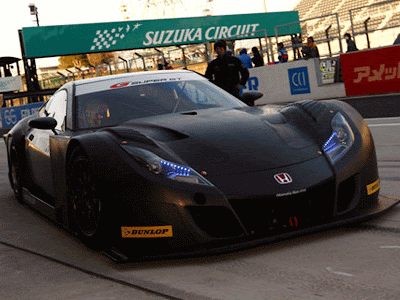Testing of the Bugatti Veyron is in its final phase Prototypes undergo trials partly under racing conditions.



 Molsheim / Paris, 23 September 2004. The new high-performance sports car, the over 400 km/h fast Bugatti Veyron, has reached its final development phase. By the start of production, the eleven Bugatti prototypes tested in parallel will have driven a total of several 100,000 kilometres under the toughest conditions. One of the main targets in the final testing is to reach a level of tuning that has never before been attained in a sports car. It is a road car that breaks totally new ground when it comes to power transferred to the road, but it still remains comfortable and manageable due to the many innovative technical features integrated in it. A Bugatti par excellence, so to speak.
Molsheim / Paris, 23 September 2004. The new high-performance sports car, the over 400 km/h fast Bugatti Veyron, has reached its final development phase. By the start of production, the eleven Bugatti prototypes tested in parallel will have driven a total of several 100,000 kilometres under the toughest conditions. One of the main targets in the final testing is to reach a level of tuning that has never before been attained in a sports car. It is a road car that breaks totally new ground when it comes to power transferred to the road, but it still remains comfortable and manageable due to the many innovative technical features integrated in it. A Bugatti par excellence, so to speak.One of the eleven prototypes is currently undergoing a gruelling endurance test of over 50,000 kilometres. The engineers are concentrating here on testing the overall vehicle. At the same time, six of the other Bugatti Veyrons are being subjected to function tests which put individual systems through their paces and simulate special driving situations repeatedly. Four other cars are being prepared for endurance testing and function tests.
The random brake tests are only one example of how rigorous endurance testing can be. As Dr Wolfgang Schreiber, head of development at Bugatti, put it, “This involves braking from 250 km/h to 80 km/h on an oval high-speed test track and then accelerating back up to 250 km/h. Five times in a row. Braking is equivalent to full braking for a normal car. But for us, it's only medium-level deceleration. The test is then repeated on the other side of the oval. So the car is subjected to 10 times full braking and 10 times full-throttle acceleration every lap it makes of the high-speed track. An enormous strain, and one which the cars must withstand without sustaining any damage.”
No less extreme are the test runs on racing tracks such as the Nьrburgring. This is where the Bugattis drive distances of several 1,000 kilometres. A large proportion of the distance is driven at full racing speed. The high-speed tyres specially developed by Michelin for the Bugatti Veyron are the first production tyres that are approved for speeds of over 400 km/h. For this reason, the Bugatti Veyron need not be shod with other tyres when driving at top speed; the production tyres are intended to cover all speed ranges.
But regardless of the speed at which the Bugatti Veyron is driven, the downforces are optimal at all times. The tyre pressure on the road is generated by an adaptive aerodynamic system which Bugatti engineers headed by Dr Schreiber have perfected in innumerable tests. The variable control system comprises two diffuser flaps in front of the front wheels and another aerodynamic unit at the rear consisting of a wing and a spoiler. Depending on the car's road speed, they produce an additional downforce of several hundred kilograms.
Next year, the Bugatti Veyron's first customers will be able to savour the balanced perfection of all-wheel drive and the first seven-speed double clutch transmission in the world. According to Dr Thomas Bscher, President of Bugatti Automobiles S.A.S., “We will start preproduction in Summer 2005. The first cars will then be delivered in the second half of the year.” Customers will not receive just a car, they will receive the pure fascination of engineering pushed to the very limits of feasibility. As Wolfgang Schreiber says, “The acceleration experience is more impressive than sitting in a jet plane that is taking off.” Thomas Bscher climbs into a prototype and adds, “The Veyron is still more manageable than any other sports car in a comparable performance class.” Then the former racing driver speeds off in the direction of the handling track. At Bugatti, the boss has always been at the wheel. Both in the first and the second ages of this unique marque.
© Source: article on seriouswheels
We need your comments below >>











No comments:
Post a Comment